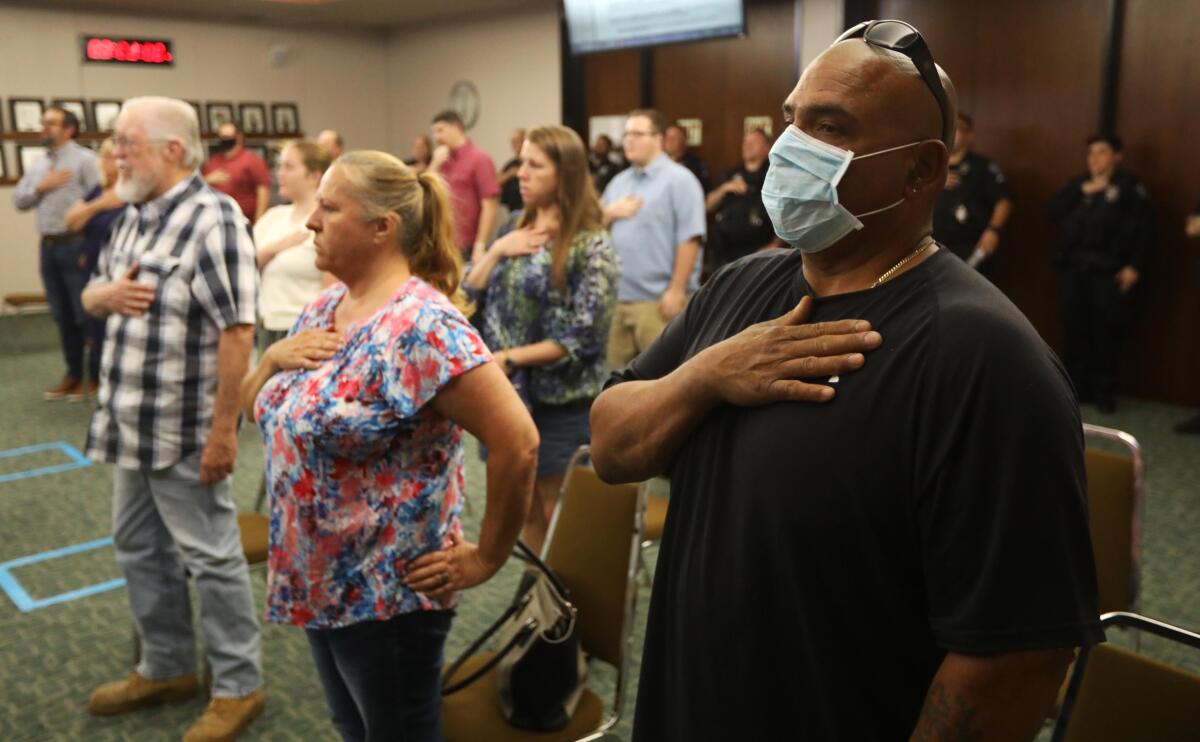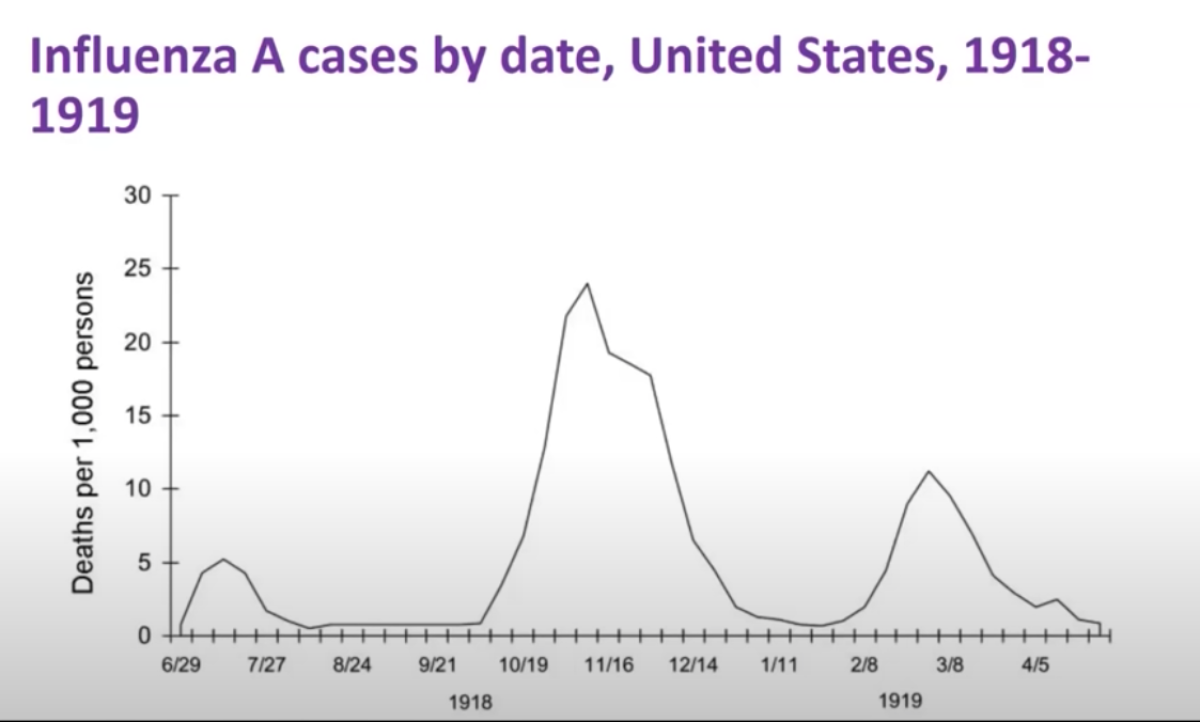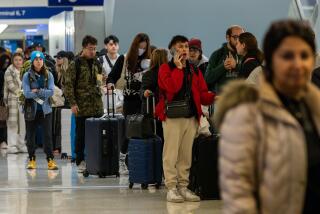California braces for second wave of coronavirus even as first wave is far from over

SAN FRANCISCO — Health experts have long warned of a potential second wave of the coronavirus as the economy reopens. But while other states have seen the first wave fade, the Golden State continues to see cases rise at a rapid clip.
California is one of about 20 states where new cases are increasing over the past five days, according to Johns Hopkins University.
A Los Angeles Times analysis shows that the number of weekly cases in California continues to rise, exceeding 17,000 last week for the first time in the pandemic. There were nearly 10,000 alone in Los Angeles County alone last week, according to the analysis. L.A. County and the Southland remain the California epicenter of the coronavirus pandemic, but there have been some troubling increases in reported disease in some Bay Area counties.
Officials are not sure whether the new cases reflect a larger spike as the economy reopens or the result of increasing testing, or perhaps a combination of both.
L.A. County reported a notable spike in cases on Friday — 1,824 new cases — a one-day record. But it included a backlog of 500 cases filed by a single lab.
“If we do see an uptick in cases in a couple of weeks from now, it will likely mean that there has already been two to four weeks of increasing transmission by that time,” said Dr. Christina Ghaly, director of health services of L.A. County. “So at this point, we could be in the midst of a new upward curve, or transmission may not have increased at all. We just don’t know yet.”
Worry about a second surge
Experts are already worried about the potential for new surges of disease as California reopens. Not only have churches and restaurant dining rooms been allowed to reopen in many parts of the state, political demonstrations in recent days have raised new concerns about rapid spread of disease.
“I’m always worried about a surge,” Barbara Ferrer, the director of public health in Los Angeles County, said Monday. “We’ve always known that as more and more people are going to be out and about, we run this risk of there being a surge.”
The U.S. Centers for Disease Control and Prevention estimates that 20% to 50% of people infected with the coronavirus do not show symptoms of illness. But asymptomatic carriers, or “silent spreaders,” are believed to transmit disease just as easily as those with visible symptoms, according to the CDC’s best estimate.
It can take three to four weeks after exposure to the virus for infected people to be hospitalized, and four to five weeks after exposure for patients to die from the disease.
The rise in cases comes as weekly hospitalizations and deaths are down statewide. There has been a 10% drop in the average number of people hospitalized daily with confirmed or suspected coronavirus infection last week compared to a month ago, from 4,859 on the week of April 27 to 4,392 last week.
And the number of weekly deaths statewide last week fell 19% to 418; the week before, it was 515.
But state officials have voiced concerns about an uptick in disease in certain pockets across the state, from the Mexican border, to parts of the San Francisco Bay Area, and a rural county close to the Oregon border.
Weekly hospitalizations for the coronavirus are up more than 30% over the past month in Orange County, California’s third most populous county.
‘We are still in the first wave’
For all the concern about a second wave that could come in the fall, where virus transmission could be aided by students returning to schools and universities, some experts point out we should be worried about the summer, too.
“We are still in the first wave,” said Dr. Robert Kim-Farley, medical epidemiologist and infectious disease expert at the UCLA Fielding School of Public Health. “We’ve flattened the curve. However, flattening the curve is a two-edged sword: You have avoided overloading one’s healthcare system, which is really the primary public health goal. But at the same time, it means that you now have lengthened the curve out for a longer period of time.”
Experts around the world have warned that the coronavirus need not follow the pattern of the 1918 flu pandemic, where a brief first wave in the spring in the U.S. was followed by a calm summer. It was only in the fall that a second, much larger and far deadlier wave hit.

“We shouldn’t just look to the fall, but we should be thinking about what’s going to be happening in … June, July, August,” Dr. Thomas Inglesby, director of the Center for Health Security at the Johns Hopkins Bloomberg School of Public Health, said at a recent panel discussion.
Broad worry about a second wave
A survey of 1,000 residents of Silicon Valley found 73% of residents worried about a second wave of coronavirus outbreaks later this year, according to a poll conducted on behalf of Northern California’s most populous county, Santa Clara County, between May 14 to 18.
Majorities said they were worried about themselves or those in their household being infected with the disease (54%) and not being able to see friends or family (55%). The poll found 41% were concerned about losing a job or not being able to find work and 39% worried about their mental health.
Officials pay close attention to a steep rise in cases in case it’s a portent of something worse to come.
In Sonoma County, officials have been concerned about a rise in coronavirus cases and hospitalizations, and have held off on allowing in-store retail, hair salons and places of worship to reopen.
In Alameda County, the San Francisco Bay Area’s second most populous county, new weekly cases rose by 19% last week compared to the previous week. Case rates are particularly high in East Oakland.
Authorities are checking to see if hospital resources are available if they are suddenly needed in the county of 1.6 million people, Dr. Mark Ghaly, secretary of the California Health and Human Services Agency, said.
Essential workers infected with coronavirus
Other counties are also keeping a close eye on troubling trends.
Marin County has seen an uptick in both cases and in the percentage of people testing positive for the highly infectious virus, rising from 4.4% to 5.3% in recent days.
“This means that even while we’re testing more people, a greater proportion of those tested are infected. This suggests we’re likely seeing at least a slight rise in actual virus transmission,” Dr. Matt Willis, the Marin County health officer, said. Most people who are testing positive in Marin County must leave home to work, which includes employees of businesses like grocery stores, hospitals, long-term care facilities, construction and landscaping.
One of the nation’s most important agricultural areas, Imperial County, saw such a surge in coronavirus patients needing hospital care that it has transferred nearly 200 patients into neighboring counties, Ghaly said, like San Diego and Riverside. There are only two hospitals in Imperial County, and hospitalizations for coronavirus cases doubled over the past five weeks.
‘Horrendous outbreak’ in Imperial County
“The Imperial Valley has a horrendous outbreak going on right now,” said Dr. George Rutherford, UC San Francisco epidemiologist and infectious diseases expert, at a campus forum Friday.
And even the introduction of five coronavirus cases in sparsely populated northern county of Lassen caused officials in the county of 31,000 people to briefly shut down dine-in restaurant services and in-store shopping again. The health officer, Dr. Kenneth Korver, cited “alarming reports of irresponsible behavior,” such as a failure to practice social distancing or employ good personal sanitation practices, for the temporary rollback of stay-at-home relaxation orders.
Southern California has moved faster than the Bay Area in reopening. L.A. County last week allowed the reopening of churches and hair salons and the resumption of indoor dining and indoor shopping at nonessential stores.
Reason for caution in L.A. County
In an interview, Rutherford said Los Angeles County’s move to relax stay-at-home orders while cases are rising calls for caution.
“Given that cases are going up in Los Angeles, I think it could potentially be a problem. I think we have to wait and see what happens,” Rutherford said.
L.A. County did meet the state’s criteria to move faster to reopen, which includes one standard that says the rate of tests that turn up positive for the coronavirus over the last week be no higher than 8%. But Rutherford said that isn’t a particularly difficult target to meet.
“I don’t view that as that hard of a criterion to meet. So I think you have to be a little bit cautious, still,” Rutherford said.
Mandatory masks may help
Widespread rules on wearing masks in public will help, Rutherford said, which keep potentially infectious fluid in the mouth from spraying out while talking. Los Angeles and Orange counties require mask-wearing in public; Riverside and San Bernardino counties rescinded mandatory mask-wearing orders amid political pressure, and Ventura County never made it a requirement.
“Masks provide a helluva lot of protection. And I’m more comfortable relaxing things if everybody is wearing masks than if they weren’t,” Rutherford said.
Ferrer, the L.A. County public health director, defended L.A. County’s reopening timeline Monday. “It is time for people to be able to get back to work in many of our sectors,” she said. “That’s really the secret here. ... At some point, we have to reopen. ... The name of the game is to make sure that when sectors are reopening, we’re taking every single precaution we can.”
Weekly hospitalizations have been declining every week in the past month in Los Angeles County.
Last week’s L.A. County death toll, 254, was an 11% decrease from the previous week’s death toll of 287. The numbers of daily deaths out of nursing homes has been declining, Ferrer said.
Lin reported from San Francisco, Lee and Shalby from Los Angeles. Times staff writer Hannah Fry contributed to this report.
More to Read
Sign up for Essential California
The most important California stories and recommendations in your inbox every morning.
You may occasionally receive promotional content from the Los Angeles Times.












